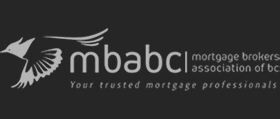Transcript of Video Blog:
Hi, everybody. I want to address a very common myth, and that’s that people think their variable rate mortgage, because it is open to fluctuations, is in fact an open mortgage. That’s not the case. There’s a lot of confusion as to what is an open mortgage versus a variable mortgage versus a closed mortgage or a fixed mortgage.
So, a fixed mortgage, well, obviously, your rate is fixed. You don’t have to worry about fluctuations in prime rate. For whatever the length of your term, whether it’s one or five years, your rate is fixed. Now, all fixed rates that we get here are closed. Meaning, to break that term — if you sell the home or you try to refinance during the term — you’re going to owe.
Typically, the penalty is the interest rate differential, the greater of the interest rate differential or three months of interest. Now, if rates have fallen substantially, you can expect the penalty to be quite large because it will be the interest rate differential.
If you do a search, some of the other blogs that I’ve done on penalties, you’ll see that there’s — I’ve explained the method of interest rate differential penalty calculation at a little more length. But in any case, if you have fixed — closed in almost every single case.
If it’s not a fixed or closed, then you’re going to be looking at a variable rate. Now, there is two types of variables — variable open and variable closed. The only difference between the two, other than rate, is that variable open can be paid off at any time with no pre-payment penalty whatsoever. The variable closed typically has a three-month interest penalty.
So you say, “Well, why would anybody take variable closed when they can take a variable open?” The difference is rate. Variable opens typically right now run you anywhere from prime plus 0.8 to prime plus 1.0. Prime rate is 3%, so that means your rate would be 3.8% to 4%.
Compare that to a variable closed mortgage will be at prime minus 0.75 or prime minus 0.8. So you’re looking at almost a point and a half to two-point spread between the two. So you can be paying 2.25% or you can be paying 3.75%. Clearly, the variable closed is a better deal if you’re going to hold the property for any length of time.
So people often come to me and say, “Well, I intend to sell it maybe in the next year or something.” Well, even in those cases, oftentimes the savings over a year-long period of time of getting the lower variable closed rate is better than paying no penalty, but paying a much higher rate as you go along.
So the important distinction here is that your open mortgage, you want to figure out how long are you going to hold that property? Open and avoiding a penalty may sound nice in principle, but if you actually end up spending thousands of dollars more over the life of the mortgage, why bother avoiding the penalty just to pay more monthly? For the Mortgage Center, I’m Rowan Smith.





